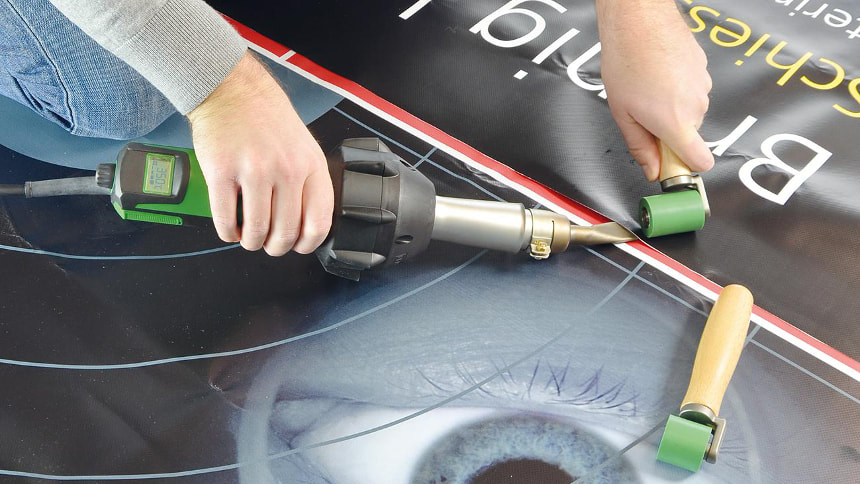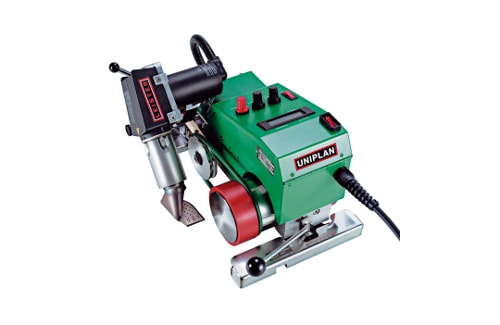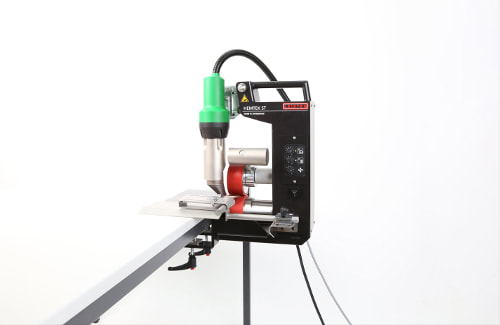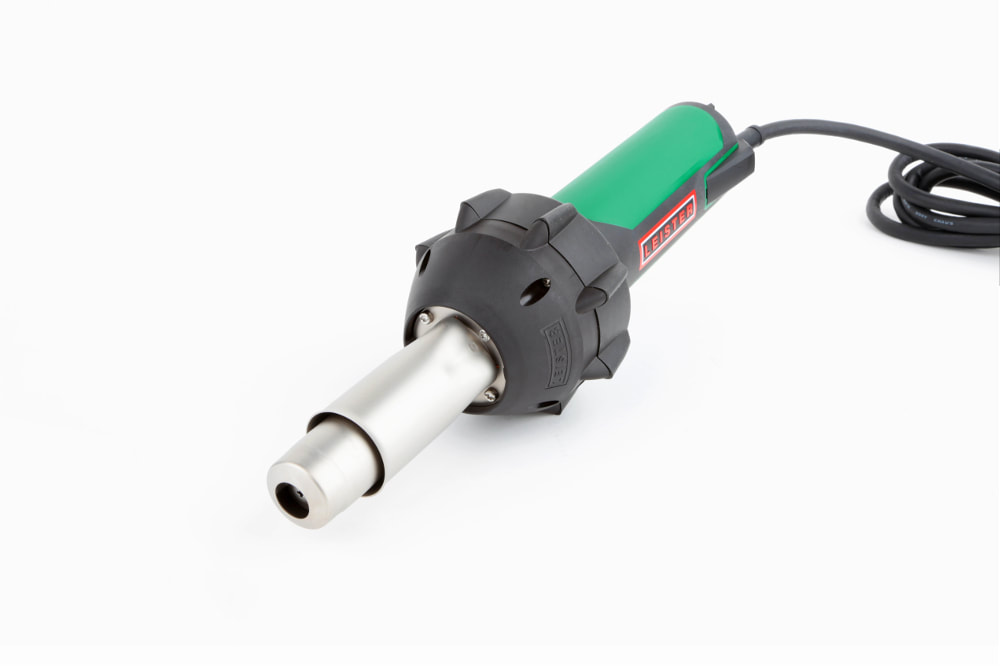|
You’ve read our article on Industrial Fabrics Joining Methods and selected hot air welding (which carries several advantages), now it’s time to pick which machine is best for the job. Broadly, there are two types of hot air welding tools: automatic and manual. Automatic tools can be further broken down into moving and stationary.
Automatic Tools
Automatic tools are best suited for large projects with straight seams. They enable the operator to work quickly (up to 18 m/min. depending on tool and conditions), and produce an extremely attractive and reliable weld. Once the correct temperature and speed parameters are found, automatic welding removes much of the chance for human error resulting in a more consistent weld; this is especially important when welding tents, tarps, and structures which must be absolutely waterproof.
There are two main types of automatic tools—moving and stationary—below are some advantages and disadvantages for each.
Manual Tools
Manual tools, also called hand tools, are ideal for short, curvy, or intricate welding projects. They are excellent for beginners, proof-of-concept projects, and low production applications because of their relatively low cost compared to automatic welders. Manual tools rely more on operator skill than automatic tools. The operator controls the speed of the tool and must simultaneously follow the nozzle with a pressure roller to compress the two layers of material together (the pressure is necessary to achieve a solid weld).
Give us a call for helping choosing the best suited tool for your project.
Originally published: 9/13/2014 Comments are closed.
|
|
STANMECH Technologies Inc.
944 Zelco Drive Burlington ON L7L 4Y3 | 1-888-438-6324 | [email protected] Terms of Use Privacy Terms and Conditions of Sale Warranty Policies |
|
Proud Member of:






